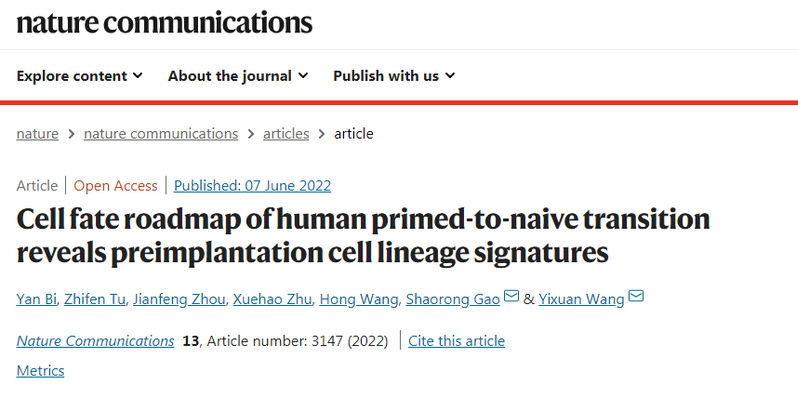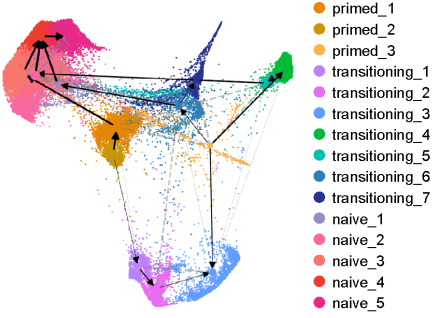On June 7, the research team headed by Professor GAO Shaorong and WANG Yixuan from the School of Life Science and Technology of Tongji University published online a paper entitled Cell fate roadmap of human primed-to-naive transition reveals preimplantation cell lineage signatures on nature communications. It is the first time for researchers to successfully describe a cell fate raodmap in the process of human primed to naive transition. Through an in-depth analysis of the key biological events and cell subsets in the process, researchers found that there will be TE-like and PrE-like heterogeneous cell populations in the process of primed-to-naive transition.

Compared with the traditional primed (human pluripotent stem cells can be of naive or primed) pluripotent stem cells, human naive pluripotent stem cells that have captured the developmental characteristics of preimplantation embryos in vivo, have higher flexibility and more potential for differentiation, which provides unique models and resources for early embryonic development research and clinical application. However, at present, there is limited understanding of the key molecular biological events that occur during the establishment of naive state, and it still remains unclear about the changes of cell subsets and key molecular events during the induction of cells from primed to naive state pluripotency (primed-to-naive).
In previous studies, researchers identified ALPG protein, a specific surface marker of naive cells, and established an ALPG-promoter-RFP reporting system, which was integrated with the recognized OCT4- Δ PE-GFP system (a gene transcription system) to give rise to a double fluorescence reporting system that may accurately indicate the pluripotency of the naive state. In this study, the researchers first integrated the reporting system into primed pluripotent stem cells to induce the transition of the naive state, and described the dynamic roadmap of marker molecule expressions during the establishment of naive pluripotency by flow cytometry of cells at different time in the process.

Dynamic raodmap of marker molecule expressions during the establishment of naive pluripotency
Subsequently, the team collected cell subpopulations with different fluorescence signals at different time and conducted detailed analysis. It was found that in the primed-to- naive process, cell subpopulations showed specific TE and PrE characteristics, accompanied by the specific high expressions of TE genes (GATA2 and GATA3) and PrE genes (GATA4 and GATA6) and motif enrichment. Subsequent experimental results also revealed that these cell subsets can be induced into functional trophoblast stem cells and ectodermal endoderm cells respectively. Meanwhile, negative cells can finally establish naive pluripotency and transit into naive pluripotent stem cells under naive conditions, which fully shows the flexibility of intermediate cell subsets.

The cell subpopulations showing specific TE and PrE characteristics
The researchers also confirmed cell subpopulations with specific and high expressions of TE signal and PrE signal in the primed-to-naive process through single-cell sequencing analysis. Dynamic changes of cell subpopulations and cell fate transition raodmap were revealed at the single-cell level when single-cell RNA rate analysis was integrated with trajectory inference analysis.

Dynamic changes of cell subsets and cell fate transition raodmap
According to Professor GAO Shaorong, this study revealed for the first time the fate transition roadmap of human cells in the process of primed-to-naive induction, which provided an important basis for the study of naive pluripotency and early embryonic development. At the same time, this study found that the heterogenous cell populations of trophoblast like and primitive endoderm like appeared simultaneously at a specific time in the process of primed-to-naive transition, which provided an important research model for the construction of human embryos in vitro.
Dr. BI Yan and Ph.D. student TU Zhifen from the School of Life Science and Technology of Tongji University are the co-first authors of this article, and Professor GAO Shaorong and Professor WANG Yixuan are the co-corresponding authors of this article. The research was supported by the Ministry of Science and Technology, the National Natural Science Foundation of China and the Shanghai Science and Technology Commission.